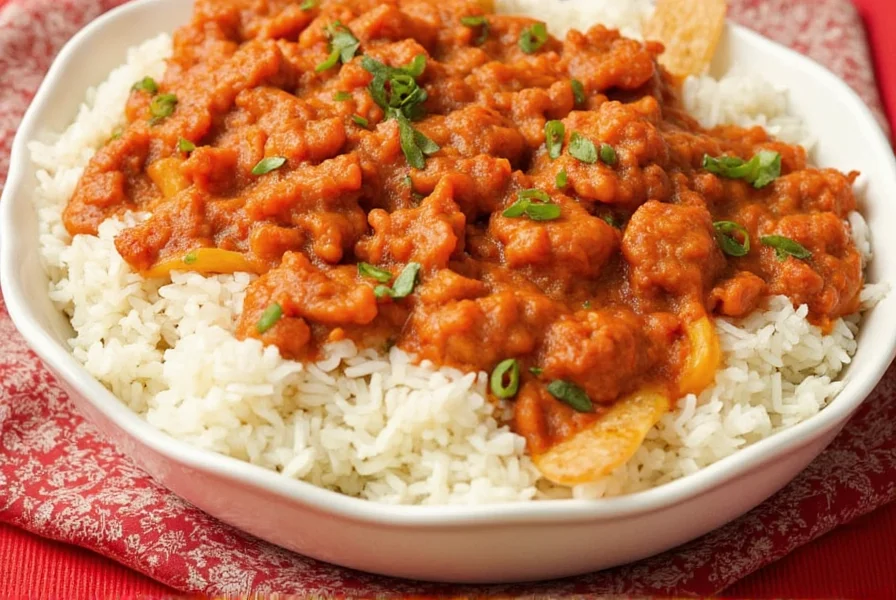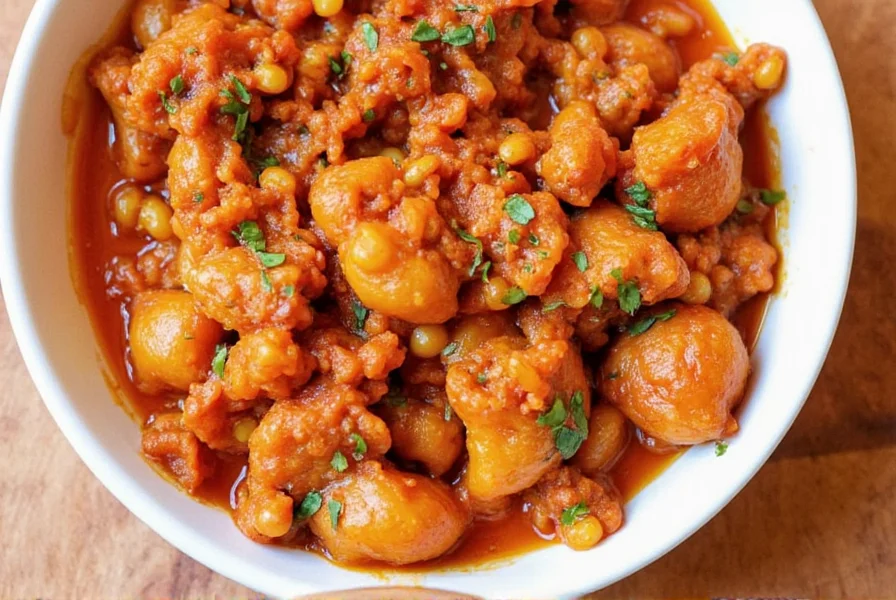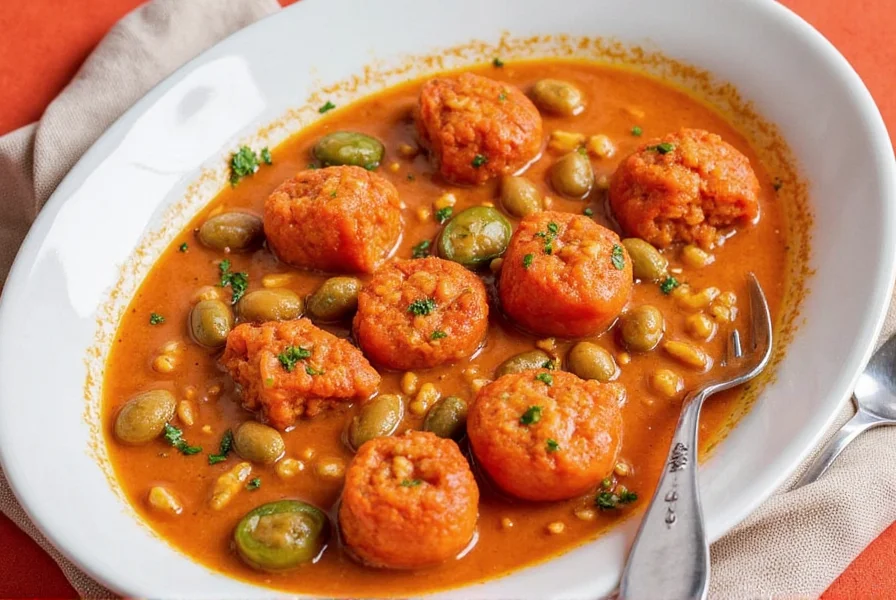Discover the transformative power of paprika in your kitchen with these carefully curated recipes. Whether you're a beginner cook or an experienced chef, paprika offers endless possibilities to elevate your meals. This deep red spice, made from ground peppers, brings both visual appeal and distinctive flavor to countless dishes across various cuisines.
Understanding Paprika Varieties
Before diving into recipes using paprika, understanding the different types ensures perfect results. Sweet paprika provides mild pepper flavor without heat, ideal for dishes where color matters most. Smoked paprika, or pimentón, delivers a rich, campfire-like depth that transforms simple ingredients. Hot paprika adds both color and noticeable heat, perfect for spice lovers. Hungarian paprika recipes typically use the sweet variety, while Spanish paprika recipes often feature the smoked version.

Top Paprika Recipes by Category
These easy paprika chicken recipes and other dishes showcase the spice's versatility. Each recipe highlights how paprika enhances specific ingredients while creating memorable flavor profiles.
| Recipe Type | Signature Dish | Paprika Variety | Prep Time |
|---|---|---|---|
| Main Dishes | Hungarian Chicken Paprikash | Sweet Hungarian | 30 minutes |
| Side Dishes | Roasted Paprika Potatoes | Smoked Spanish | 15 minutes |
| Appetizers | Paprika Deviled Eggs | Sweet | 20 minutes |
| Sauces | Smoked Paprika Aioli | Smoked | 10 minutes |
Hungarian Chicken Paprikash: A Classic Paprika Recipe
This authentic Hungarian paprika recipe features tender chicken simmered in a rich sauce made with onions, sour cream, and generous amounts of sweet paprika. The key to perfect paprikash is adding paprika off-heat to preserve its flavor compounds. Many traditional recipes using paprika from Hungary specify "noble sweet" paprika for its superior quality and vibrant color.
For best results in your paprika recipes for dinner, brown chicken thighs first, then cook onions until golden before stirring in 3 tablespoons of paprika. Add broth and simmer until chicken is tender, then finish with sour cream. Serve over egg noodles for an authentic experience. This dish exemplifies why Hungarian paprika recipes remain beloved worldwide.
Smoked Paprika Roasted Vegetables
Transform ordinary vegetables into extraordinary side dishes with smoked paprika recipes. Toss bell peppers, zucchini, and red onions with olive oil, 2 teaspoons of smoked paprika, salt, and garlic powder. Roast at 400°F until caramelized and tender. The smoky depth complements the natural sweetness of the vegetables perfectly.
These healthy recipes with paprika work well for meal prep too. Prepare a large batch on Sunday and enjoy throughout the week. Smoked paprika recipes for dinner often feature these roasted vegetables alongside proteins for balanced meals. The spice's robust flavor holds up well when reheated, making it ideal for leftovers.

Paprika Pairing Principles
Understanding flavor combinations elevates your paprika spice recipes. Paprika harmonizes beautifully with garlic, onions, tomatoes, and citrus. For Hungarian paprika recipes, pair with caraway and dill. Spanish paprika recipes traditionally combine with sherry vinegar and saffron. When creating vegetarian recipes using paprika, consider adding cumin or coriander for complexity.
The acid in lemon or tomato balances paprika's earthiness, while dairy products like sour cream or yogurt mellow its intensity. These pairing principles apply whether you're making easy paprika chicken recipes or vegetarian options. Remember that paprika's flavor intensifies when cooked, so start with less and adjust to taste.
Avoiding Common Paprika Mistakes
Many home cooks make critical errors with paprika that diminish its impact. Never cook paprika over high heat, as this burns the delicate compounds and creates bitterness. Instead, add it to dishes during the last few minutes of cooking or mix with cold ingredients like mayonnaise for dips.
Store paprika in an airtight container away from light and heat to preserve its vibrant color and flavor. Replace it every 6-12 months, as spices lose potency over time. When following paprika recipes for beginners, measure carefully—too much can overwhelm other flavors. For paprika recipes for meal prep, consider adding the spice separately to individual portions to maintain optimal flavor.
Global Paprika Traditions
Paprika features prominently in multiple culinary traditions. Hungarian cuisine uses it as a foundational spice in goulash and fish soup. Spanish cooking incorporates smoked paprika in chorizo and patatas bravas. In North African dishes, paprika often appears in spice blends like ras el hanout. These traditional applications demonstrate why paprika seasoning recipes vary significantly by region.
Exploring authentic paprika recipes from different cultures expands your cooking repertoire. Try making Spanish paprika recipes like chorizo stew or Hungarian paprika recipes such as lecsó (a vegetable and meat stew). Each tradition offers unique techniques for maximizing paprika's potential in dishes.
Frequently Asked Questions
What's the difference between sweet and smoked paprika?
Sweet paprika offers mild pepper flavor without heat, while smoked paprika is made from peppers dried over oak fires, giving it a distinctive smoky flavor. Sweet paprika works best in Hungarian dishes, while smoked paprika shines in Spanish recipes like chorizo and patatas bravas.
Can I substitute paprika if I don't have it?
While no perfect substitute exists, you can use chili powder for heat or a pinch of cayenne with a bit of tomato paste for color. For smoked paprika, try adding a few drops of liquid smoke to sweet paprika. However, authentic paprika recipes rely on its unique flavor profile that's difficult to replicate exactly.
How should I store paprika to keep it fresh?
Store paprika in an airtight container away from light, heat, and moisture. A cool, dark cupboard works well, but refrigeration extends freshness. Properly stored, sweet paprika lasts 1-2 years while smoked varieties maintain quality for 6-12 months. Replace when the color fades or aroma diminishes.
Which dishes work best with hot paprika?
Hot paprika enhances dishes where you want both color and heat, such as spicy chorizo, Hungarian fish soup, or roasted meats. It works particularly well in recipes using paprika that benefit from extra kick, like spicy deviled eggs or bold marinades. Start with small amounts and adjust to your heat preference.











 浙公网安备
33010002000092号
浙公网安备
33010002000092号 浙B2-20120091-4
浙B2-20120091-4